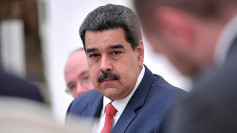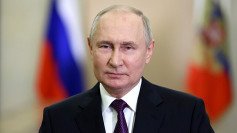India's economy concluded the year 2023 with a notable acceleration, as its Gross Domestic Product (GDP) experienced an 8.4% growth in the last quarter, surpassing the previous period's 7.6% increase, as reported by the nation's statistical office. This growth, exceeding analysts' expectations, underscores India's status as the world's fastest-growing major economy, with a robust annual expansion of 7.7%. The momentum seems to continue into 2024, suggesting a bright economic outlook for the country.
The International Monetary Fund (IMF) projects India's economy to expand by 6.5% in 2024, outpacing China's expected growth of 4.6%, amidst various challenges facing the Chinese economy. This sustained growth is set to propel India from the world's fifth-largest to the third-largest economy by 2027, according to analysts at Jefferies.
India's economic vitality is also drawing global attention as an alternative to China for countries and corporations seeking to diversify their supply chains amidst deteriorating Sino-American relations. Prime Minister Narendra Modi's government is keen on attracting significant investments, with major companies like Foxconn and Tesla expressing interest in expanding their operations in India.
Despite the robust growth, some caution that the pace may slightly decelerate due to external factors such as weak global growth affecting exports and domestic constraints like tighter lending regulations. However, the government's focus on infrastructure development is expected to sustain economic activity.
In parallel, India's remarkable growth trajectory in the final quarter of 2023 has political implications, especially for Prime Minister Narendra Modi, as it enhances his economic leadership credentials ahead of the impending national elections. The 8.4% growth, driven by strong manufacturing and construction sectors, is the fastest in one-and-a-half years, potentially bolstering Modi's electoral prospects.
India's industrial sector continued its impressive performance, contributing significantly to the quarter's growth. The manufacturing sector, in particular, saw an 11.6% expansion, supported by lower input costs. Investment growth remained robust, and the construction sector grew by over 9%.
While the industrial and service sectors flourished, the agricultural sector faced challenges due to adverse monsoon conditions, contracting by 0.8% in the December quarter. Rural economic weakness has implications for consumer demand and poses challenges for companies heavily reliant on rural markets.
Despite these challenges, policymakers remain optimistic about a rural recovery, anticipating better performance in the agricultural sector in the coming fiscal year. This optimism is backed by expectations of improved rural demand and income growth, which would contribute to the overall economic momentum.
India's economic resilience and growth amidst global headwinds not only highlight its emerging role in the global economic order but also reflect the strategic policy initiatives undertaken by the Modi administration. As India gears up for elections, the economic achievements under Modi's leadership could play a pivotal role in shaping the political landscape.






